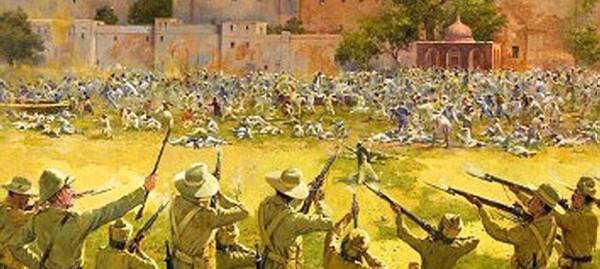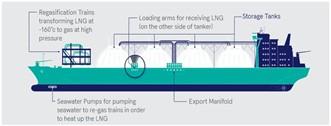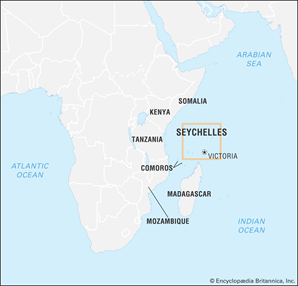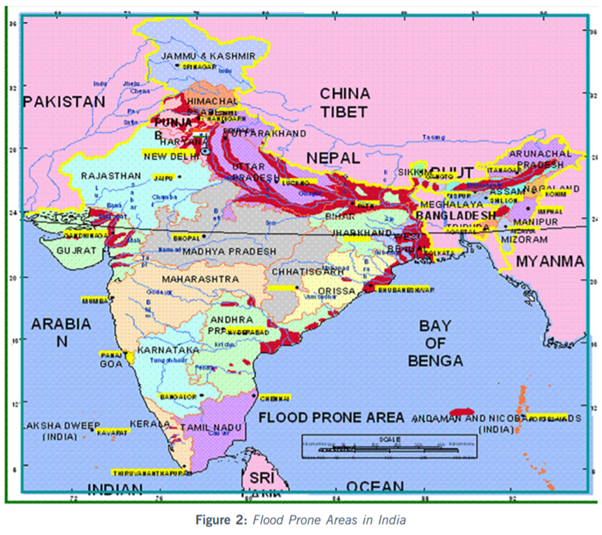Tuesday, 13th April 2021
This day in History- The Jallianwala Bagh massacre

13th April is unpopular in the history of India as The Jallianwala Bagh massacre happened on the same day in the year 1919. Brigadier-General Dyer ordered troops of the British Indian Army to fire their rifles into a crowd of unarmed Indian civilians in Jallianwala Bagh, Amritsar, Punjab, killing and injuring thousands of innocent people.
https://scroll.in/article/806572/bloodbath-on-baisakhi-the-jallianwala-bagh-massacre-april-13-1919
Launch of India Energy Dashboards (Version 2.0) by NITI Aayog
In News
The India Energy Dashboards Version 2.0 was launched by the NITI Aayog recently.
Key features of the India Energy Dashboards-2.0
- It is an endeavour to provide single-window access to the energy data for the country.
- Time Series Data: The IED provides time series data from FY 2005-06 until FY 2019-20.
- Data at sub-yearly frequency: IED provides data at sub-yearly frequencies as well. This includes monthly data and API (Application Programming Interface) linked data from some portals maintained by the government agencies. API linked data from Saubhagya, UJALA, PRAAPTI, and Vidyut PRAVAH has been incorporated in the portal.
- Feedback and Suggestions: A ‘Feedback and Suggestions’ forum for the engagement of the energy data user community has been incorporated.
- Semi-Automated Workflow: A semi-automated workflow/ issue-tracking system for managing periodic updates to the IED. The workflow system performs basic checks and data validation, helping to avoid incorrect data entry.
Significance of the India Energy Dashboard
- Visually interesting and easy to understand: This is the first such effort in India in the public domain.
- Compilation in a single platform: The dashboards feature 11 years of statistics from sources such as the All India Electricity Statistics, the Coal Controller’s Organisation’s Coal Directory of India, the Ministry of Petroleum and Natural Gas’ Petroleum and Natural Gas Statistics, and the Ministry of Statistics and Programme Implementation’s Energy Statistics.
- Promote energy research: Reliable and easily available data is a requirement for all research organisations in the country. The energy dashboards would address a major need for energy-related research in the country.
Issues with the India Energy Dashboard
- Lack of availability of region-specific data: Sub-State data, which is important for understanding region-specific or localised disparities, could not be incorporated because it was not readily available. The state level data is scattered across numerous platforms and is not available in uniform format.
- Absence of consumption data: In most countries, energy supply data is more readily available because it’s generally easier to collect from a few large energy companies. Energy consumption data, on the other hand, is much harder to come by because the number of consumers runs to hundreds of thousands and there is high variability of use among them.
- Absence of financial data: Financial data, which includes data about investments, accumulated losses and cost trends, is also harder to collate and not easily accessible. Reasonable data exists on commercial energy, or energy that’s priced/bought-and-sold. But developing countries, including India, also have significant use of non-commercial energy like firewood and dung cakes and data about such energy is hard to find.
Sources:
India's first Floating Storage and Regasification Unit (FSRU)
In News
India’s first Floating Storage and Regasification Unit (FSRU) has arrived at H-Energy’s Jaigarh Terminal in Maharashtra.
About the News
- India’s first: India's first FSRU based LNG regasification terminal will be located at JSW Jaigarh Port in the Ratnagiri district of Maharashtra, on the west coast of India.
- The port is the first deep water, 24x7 operational private port in Maharashtra.
- The FSRU: It has storage capacity of 170,000 cubic metres and installed regasification capacity of 750 million cubic feet per day (equivalent to about six million tonnes a year).
- LNG Distribution: Regasified LNG will be delivered to the 56-km long Jaigarh-Dabhol natural gas pipeline, connecting the LNG terminal to the national gas grid.
- The facility will also deliver LNG through truck loading facilities for onshore distribution, the facility is also capable to reload LNG onto small-scale LNG vessels for bunkering services.
- H-Energy: H-Energy has chartered the FSRU for a 10 year period and it also intends to develop small-scale LNG market in the region, using the FSRU for storage and reloading LNG onto smaller vessels.
- Benefits: FSRU based LNG Terminals aim at providing the ability to enhance the pace of natural gas import capability in an environment friendly and efficient manner.
- It will also help fulfil India’s vision of increasing the share of natural gas in India’s energy mix from present 6 per cent to 15 per cent by 2030.

What is a Floating Storage Regasification Unit (FSRU)?
- A Floating Storage Regasification Unit (FSRU) is a vital component required while transiting and transferring Liquefied Natural Gas (LNG) through the oceanic Therefore, FSRU can be termed as a special type of ship used for LNG transfer.
- Natural gas is extracted and transported by pipeline, or liquified by cooling and transported by sea on specially constructed LNG tanker vessels. The liquified gas then needs to be re-gasified for use at destination.
- This regasification can take place by discharging to an onshore terminal or, alternatively, offshore to a purpose-built vessel or converted LNG tanker referred to as Floating Storage Regasification Units or “FSRUs”.
Sources:
https://www.hellenicshippingnews.com/floating-storage-regasification-units/
Image of the Day- Baby Rhino

A baby rhino was born in at Royal Burgers’ Zoo, Arnhem, Netherlands. Rhinoes are large herbivorous mammals which are poached for their horns. These horns find use in traditional medicine and ornaments. Due to this, out of the 5 surviving species of Rhinos, 3 of them are critically endangered. There is an increased effort to conserve them as they are considered an “umbrella species” i.e. other species of plants, birds, insects, and mammals depend on them.
NITI Aayog pitches for online dispute resolution
In News
NITI Aayog has recently launched its Online Dispute Resolution handbook. The handbook highlights the need for a mechanism to adopt ODR and the models of ODR that businesses can adopt along with an actionable pathway for them.
What Is Online Dispute Resolution?Online Dispute Resolution, or ODR, refers to a broad set of technologies meant to either supplement or replace ways in which people have traditionally resolved their disputes. ODR shares and builds upon the foundational characteristics of alternative dispute resolution, or ADR, emphasizing easier and more efficient methods of addressing conflict. ODR in India · The ODR system in India has already been initiated with the Nilekani panel in 2019 recommending the setting up of online dispute resolution systems to handle complaints arising out of digital payments. The committee suggested that such an ODR platform should have two levels – one automated and one human, with a provision for appeal. · Rajasthan State Legal Services Authority conducted its first Online Lok Adalat in 2020 across 350 courts from 37 districts. · The Income Tax Department has come up with an E-assessment Scheme (EAS), which seeks to do away with any human interaction between an income tax assessee and officer from the IT Department. |
Benefits of Online Dispute Resolution

Issues with dispute resolution in India today
- Time Consuming: Resolving disputes in India takes on an average 1,445 days which is six times longer than an OECD country and nearly 3 times as much as China.
- Expensive: The average cost incurred by a litigant visiting the courts in India is Rs. 497 which is significant in a country where 20 percent of the citizens have average savings below Rs.500. In addition to this there are other costs like court fee, lawyer fee, documentation cost. Opportunity cost includes lost wages and enforced unproductiveness of assets.
- Onerous: The entire process of litigation is too complex for those who do not understand how to engage with the complex legal system.
- Macroeconomic cost of dispute resolution: Dispute resolution costs borne by Indian citizens and businesses amount to nearly 1.88% of the GDP. Entrepreneurs from marginalised and vulnerable communities suffer disproportionately due to inefficient dispute resolution.
Opportunities to mainstream online dispute resolution
- Increase in digital penetration among all classes.
- Support of the higher judiciary for ODR.
- Steps taken by the RBI and NCPI to incorporate ODR in areas such as digital payments.
- Covid-19 has instilled an urgent need for ODR that requires decisive action, with the likelihood of a spurt in disputes before the courts—most notably in lending, credit, property, commerce, and retail.
- Ease of Doing business has been a priority area of the government. As a part of this, there is a need to focus on improving the enforcing contracts mechanism in India through innovative methods like Online Dispute Resolution.
Areas where ODR can be adopted
- Consumer disputes: All online traders can be mandated to provide an easily accessible link to an ODR platform on their website for consumer information using which consumers can file complaints.
- Insurance claims: The insurance sector has vast potential for using AI technology and aiding court annexed as well as private negotiation.
- Intellectual Property/Domain Name disputes: Registration of domain name is a competitive process that can lead to conflicts as parties are interested in protecting their intellectual property entitlements. The World Intellectual Property Organization is working to expand this online arbitration to other intellectual property rights disputes also wherein all submissions, communications as well as payments will be made electronically.
- E-commerce: The potential and practice of ODR for consumer disputes will also largely apply to e-commerce disputes as well.
- Small causes and small claims disputes: ODR can be useful for settlement of small claims disputes, property disputes, motor vehicle accident and injury claims of low value and societies and cooperative association disputes.
Requirements for an effective ODR mechanism
- Awareness: ODR also faces mental barriers since people may not readily be comfortable with internet driven communication as opposed to face to face communication. A shift in mentality is a requirement to increase the adoption of ODR in India.
- Accessibility: The ODR platforms should endeavour to make the dispute resolution process inclusive. Technology should increase access and not act as a barrier. Friendly user-interfaces, special features for people with disabilities and translations for regional languages should be provided for in the mechanism.
- Capacity Building: Capacity building is a long drawn process, but a few recent developments show promise. PayPal for example has an online dispute resolution centre in India which acts as a neutral third party in resolving consumer disputes which allows parties to first negotiate their issues and on its failure, to arbitrate their disputes.
- Legal and Policy Framework: ODR provides a platform for cross-border parties to resolve their disputes in a neutral space provided by the internet. However, the likelihood of proceedings being subject to jurisdictional challenges also increases. Current ADR proceedings across the country have already faced jurisdictional issues and challenges. These complexities are only augmented in an online world, whose jurisdictional contours are yet to be clearly demarcated. Thus, any law and policy framework for ODR will have to necessarily address these concerns.
- Ensuring privacy protection: One of the key elements which make ADR successful is its confidentiality aspect. When this process is conducted online, there is naturally some room for concern regarding data privacy during and after proceedings. One of the ways to safeguard parties’ interests is to ensure that there are guidelines and standards which mandate encryption of documents along with a stringent privacy policy.
- Timely justice: ODR platforms should provide for an efficient and time bound dispute resolution. Measures should be taken to reduce the delay in the dispute resolution process.
ODR holds great potential for India particularly for small and medium value disputes. It can enhance access to justice and ease of doing business, as efficient dispute resolution will be key in reviving the economy from the challenges posed by the COVID-19.
Sources:
https://vidhilegalpolicy.in/research/the-future-of-dispute-resolution-in-india/
Shaphari
- Context- The Marine Products Exports Development Authority (MPEDA) has developed a certification scheme for aquaculture products named
- Shaphari is a Sanksrit word which means superior quality of fishery products suitable for human consumption.
- It is a market-based tool for hatcheries to adopt good aquaculture practicesand produce quality antibiotic-free shrimp products (country’s biggest seafood export item).
- This scheme is based on the United Nations’ Food and Agriculture Organization’s technical guidelines on aquaculture certification and will have two components:
- certifying hatcheries for the quality of their seeds and,
- approving shrimp farms that adopt the requisite good practices.
- The entire certification process will be online to minimize human errors and ensure higher credibility and transparency.
Primary source: https://www.thehindu.com/news/national/certification-scheme-to-encourage-good-aquaculture-practices/article34295794.ece
DIKSHA platform
- Context- As per a study by Vidhi Centre for Legal Policy, visually impaired students can’t access more than half of NCERT material on DIKSHA platform.
- Digital Infrastructure Knowledge Sharing (DIKSHA) is a national platform for school education and training, foundational learning programs and to support inclusive learning for underserved and differently abled communities of learners and teachers.
- It is an initiative of Ministry of Education and was launched in 2017 for providing digital platform to teachers to create training content, in-class resources, profiles, assessment aids, and connect with other teachers more seamlessly.
- DIKSHA also offers textbooks for students across different boards and languages.
- During the present disruptions in conventional teaching due to Covid-19 crisis, DIKSHA is being used by teachers and students across the nation to provide and access school education through distance mode.
Primary source: https://pib.gov.in/PressReleseDetailm.aspx?PRID=1598423
Jyotirao Phule
- Context- 194th birth anniversary
- Jyotirao Govindrao Phule, an Indian writer, social activist, thinker and anti-caste social reformer was born on April 11, 1827 in Maharashtra.
- He is known for his work towards the eradication of untouchability and removal of caste system and efforts in educating women.
- He and his wife, Savitribai Phule, were pioneers of women's education in India.
- Phule started his first indigenously-run school for girls in 1848 in Pune.
- He, along with his followers, formed the Satyashodhak Samaj (Society of Truth Seekers) in 1873 to attain equal rights for people from exploited castes.
- He also advocated widow remarriage and opposed idolatry.
- Phule is regarded as an important figure in the social reform movement in Maharashtra and was bestowed with the honorific Mahatma title by Maharashtrian social activist Vithalrao Krishnaji Vandekar in 1888.
Primary source: https://www.dnaindia.com/india/report-jyotiba-phule-jayanti-april-18-history-significance-and-facts-about-jyotirao-govindrao-phule-2885788
India and the great power triangle of Russia, China and US - IE
Essence - Editorial is giving an informative account of shifts in the triangular relationship between Russia, China and America. Change is the only permanent feature of the world. Russia, which today resents India’s growing strategic warmth with the US, has its own long history of collaboration with Washington. Moscow and Washington were allies in defeating Hitler’s Germany and in constructing the post-War Yalta system on which the current world order rests. The alliance between Washington and Moscow, however, quickly degenerated into a Cold War by the late 1940s.
If Moscow was the big brother of China in the 1950s, Beijing is the senior partner today. Following the old Chinese dictum of “aligning with the far to balance the near”, Mao was cosying up with Washington in 1971 to counter the perceived threat from Russia. Delhi was happy to welcome Russia’s repeated veto in the United Nations Security Council against Anglo-American interventions on the Kashmir question. But it was anxious about the dangers of a potential US-Russian global condominium.
Delhi has successfully managed the changing dynamics between the great powers, and is now in an even better position to do so thanks to the size of the Indian economy.
Why you should read this article?
- To understand present world order and some of its contemporary, as well as historical reasons.
- To know about challenges before India, in pursuing interests through bilateral relations with great powers.
- To know about the factors which give depth to India’s foreign policy prospects.
Resolving the lockdown dilemma – Hindu Business Line
Essence - The worryingly steep rise in the Covid-19 cases in recent weeks has brought back the dilemmas over lockdown. In this context, this article while highlighting previous experiments with lockdowns in different forms suggests for a multi-pronged strategy of altered lockdown, preventive measures and 3-T (test-trace-treatment).
Why you should read this article?
- Learn about the previous experience and recent responses by Centre and States amid rising Covid cases
- Understand the dilemma of ‘lives or livelihoods’ which is very much at the core of the present challenge.
- Know about the steps which can resolve the lockdown dilemma such as participatory approach, Volunteer groups could be formed for local level monitoring in collaboration with the police, lockdowns may be imposed in short bursts and in rotation, etc.
Link - https://www.thehindubusinessline.com/opinion/resolving-the-lockdown-dilemma/article34304054.ece
Cafe Able: Empowering the Differently Abled
Present Situation
- As per Census 2011, nearly 2.21% of population has disability but majority of them are unemployed.
- Government officials receive numerous petitions from the differently-abled either asking for pensions from the government
- However pensions do not offer real empowerment. So a different path was taking by District Collector in Tamil Nadu

About Café Able
- To instill confidence entrepreneurial spirit and promote self-reliance among differently abled, District Collector (DC) Sandeep Nanduri decided to establish a cafe to be run by differently-abled individual entirely.
- Cafe Able was established inside the premises of District Collectorate using CSR funds and donations
- 45-day Training course in Cooking, Catering, Efficient Customer Response, Dealing with Crisis and how to manage finances were provided to them
Outcomes
- Financial Empowerment of one of the most marginalised section of the society.
- Social Empowerment by removing the stigma attached to disability.
- Creation of Entrepreneurship Spirit as more differently-abled citizenare now availing government loans to start their own ventures
- Positive attitudinal change by removing the fear of failure and replacing it with sense of conviction to succeed in the venture
Where can we used this case study?
Innovative Case study under Sugamya Bharat Abhiyan, Example for empowerment of the marginalised section of population, Initiative under Development Industry — the Role of various groups and associations etc.
Share the article
Get Latest Updates on Offers, Event dates, and free Mentorship sessions.

Get in touch with our Expert Academic Counsellors 👋
FAQs
UPSC Daily Current Affairs focuses on learning current events on a daily basis. An aspirant needs to study regular and updated information about current events, news, and relevant topics that are important for UPSC aspirants. It covers national and international affairs, government policies, socio-economic issues, science and technology advancements, and more.
UPSC Daily Current Affairs provides aspirants with a concise and comprehensive overview of the latest happenings and developments across various fields. It helps aspirants stay updated with current affairs and provides them with valuable insights and analysis, which are essential for answering questions in the UPSC examinations. It enhances their knowledge, analytical skills, and ability to connect current affairs with the UPSC syllabus.
UPSC Daily Current Affairs covers a wide range of topics, including politics, economics, science and technology, environment, social issues, governance, international relations, and more. It offers news summaries, in-depth analyses, editorials, opinion pieces, and relevant study materials. It also provides practice questions and quizzes to help aspirants test their understanding of current affairs.
Edukemy's UPSC Daily Current Affairs can be accessed through:
- UPSC Daily Current Affairs can be accessed through Current Affairs tab at the top of the Main Page of Edukemy.
- Edukemy Mobile app: The Daily Current Affairs can also be access through Edukemy Mobile App.
- Social media: Follow Edukemy’s official social media accounts or pages that provide UPSC Daily Current Affairs updates, including Facebook, Twitter, or Telegram channels.





